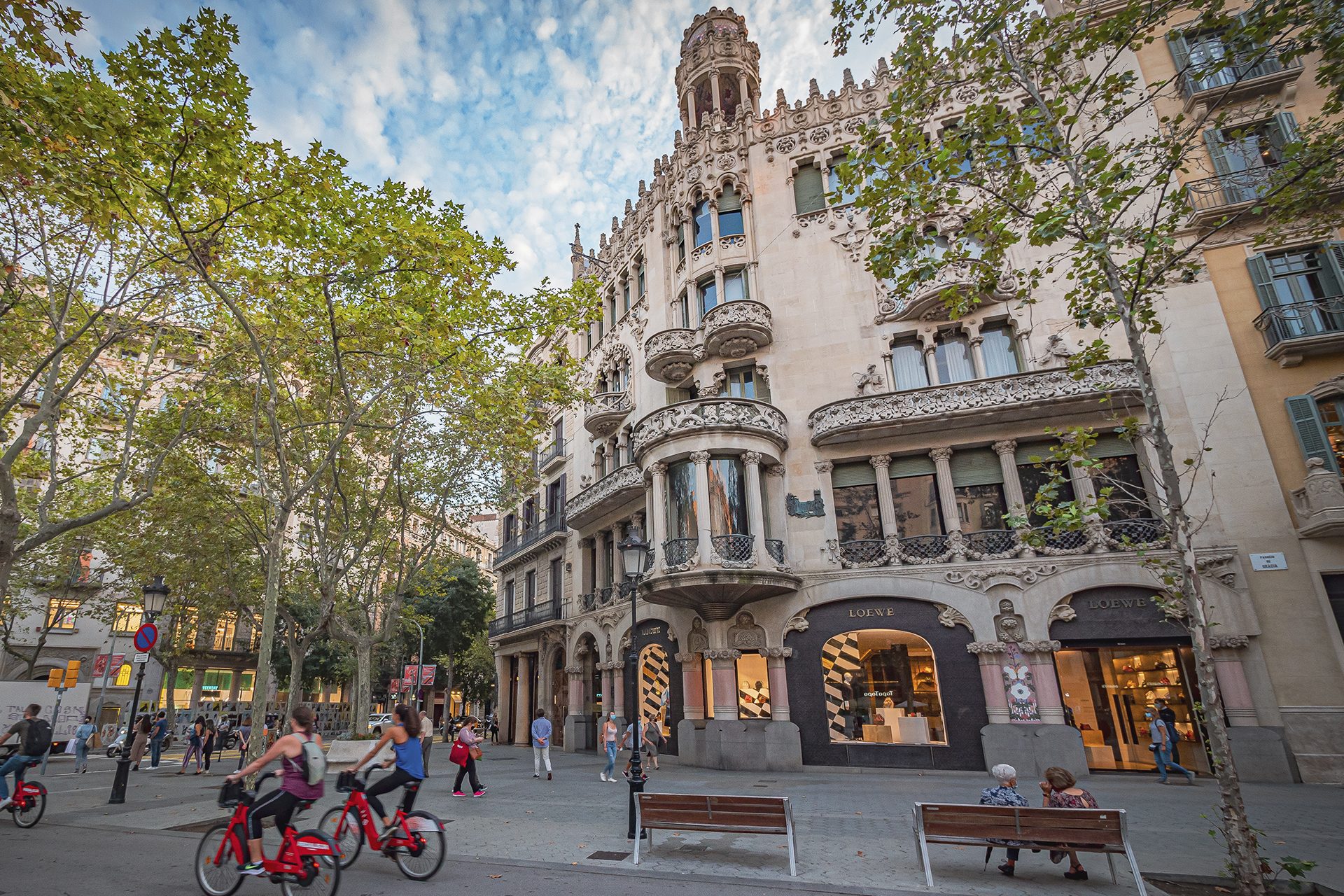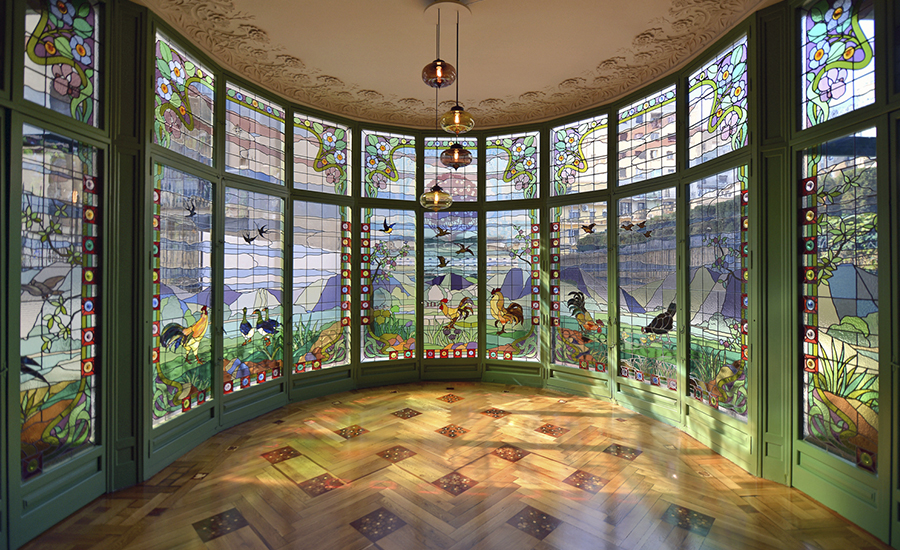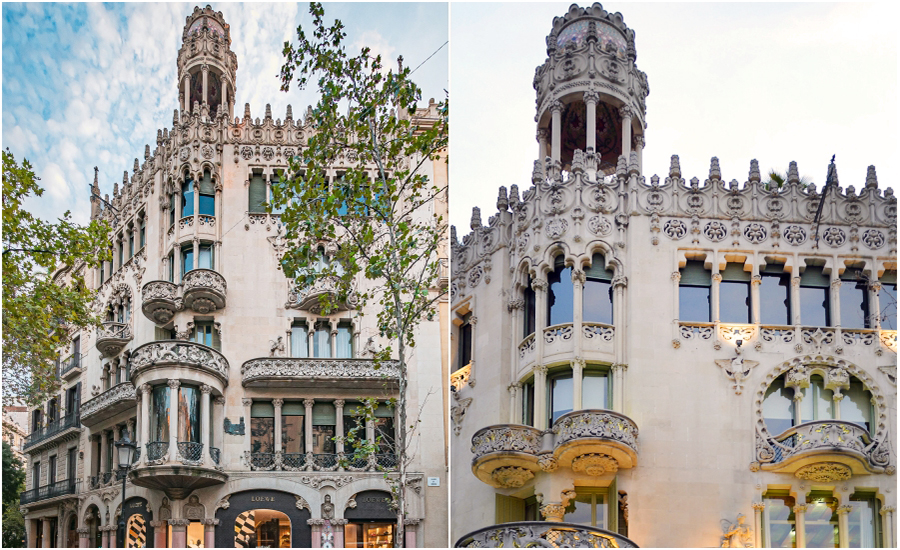Casa Lleó i Morera: the inside beauty

A few steps from the other jewels of the Illa de la Discórdia on the Passeig de Gràcia, the Casa Lleó i Morera has been shown again to the visitor in its original splendor after the last restoration carried out in 2008. Except for the criticized absence of the nymphs on the ground floor, the last of the four restorations of this magnificent building today allows Barcelonians and visitors to get closer to one of the most significant works of the great modernist architect, Lluís Domènech i Montaner.

Built between 1902 and 1906 by order of the matriarch of the family Lleó i Morera, doña Francesca Morera y Ortiz, it is a family home that remained for more than three generations in the hands of the heirs of the family, which greatly influenced the preservation of much of its interior decoration, one of the most appreciable and best preserved in the city and where more than 40 artists and master craftsmen of the time participated, such as the sculptor Eusebi Arnau, mosaicist Mario Maragliano and the cabinetmaker Gaspar Homar.
The interior of the house not only stands out for the refinement and quality of the coffered ceiling, sculptures, mosaics, paintings, frames, furniture and stained glass, but for the equitable distribution of all these details from the main floor to the last of the houses intended for rent, with the intention of dignifying and distinguishing the building.

Being located on the chamfer that links Passeig de Gràcia with Consell de Cent street, the site had an irregular structure that divided it into two sides of different length, a problem that Doménech and Montaner solved by monumentalizing the corner with a grandstand and circular balconies and topping its vertical axis upwards, with a stone shrine and a mosaic dome. It also provided the ground floor with large arched windows and placed balconies divided by columns on the rest of the floors. Thus, each floor is composed differently and finishes off the set with crests of highly ornamented stone pinnacles.
After its last restoration, the so-called noble floor of the house was opened to the public in January 2014 so that Barcelonians and visitors to the city have the opportunity to give their own verdict to the dilemma of the Illa de la Discòrdia. An interesting detail is that the Casa Lleó i Morera is the only one of the three that won the Annual Competition of Artistic Buildings of the City of Barcelona, edition 1906.

